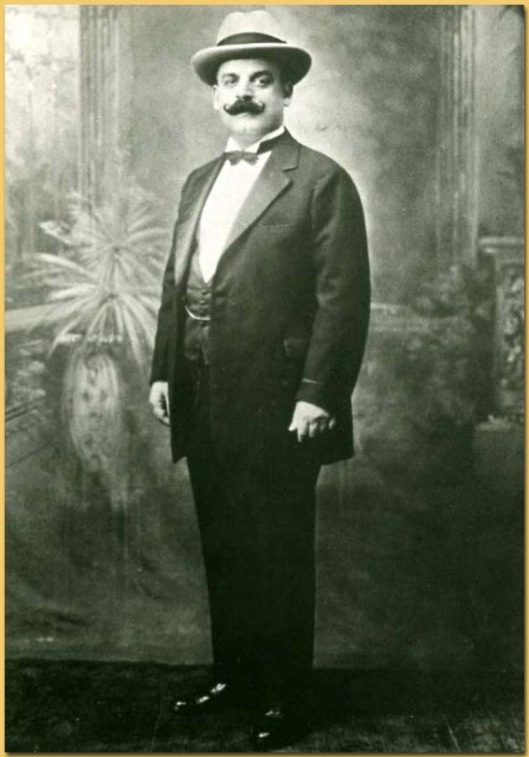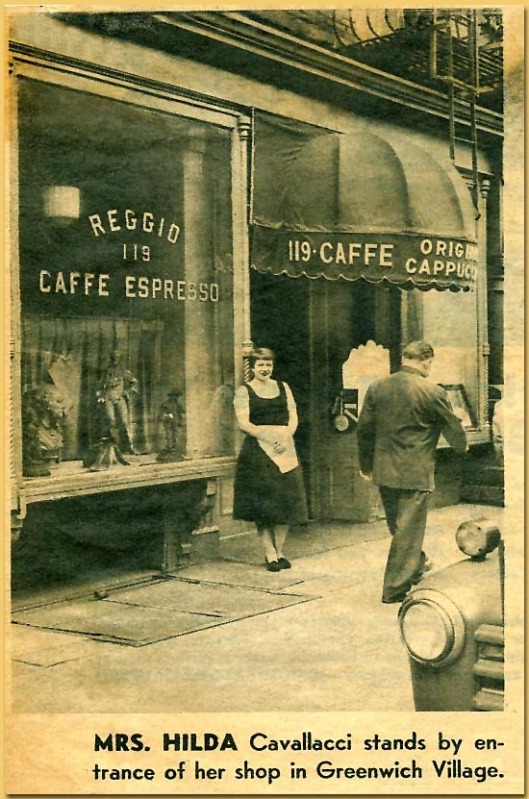Tags
Caffe Reggio, coffee, culture, food, Greenwich Village, history, Manhattan, New York City, travel
There are not many places left in New York City where you can spot writers furiously scribbling in leather-bound notebooks (what, no iPad?!) and reading Nietzsche.
Surprisingly, there still is a cafe where you can delve into the philosophical underpinnings of works like The Unbearable Lightness of Being. Caffe Reggio, open since 1927 in Greenwich Village, continues to be a gathering place for older and younger generations of writers, artists, and philosophers. And the sightings of students reading Nietzsche and Milan Kundera? All were recent.
The round-backed cafe chairs, Caravaggio-style paintings, and soft glow emanating from Caffe Reggio’s chandeliers contribute to the coziness of this cafe; its history is equally as romantic as its atmosphere.
In the early 20th century, an Italian-immigrant barber named Domenic Parisi was beginning to lose his eyesight. Having cut hair for forty years, Parisi took all $1,000 of his life savings and sent for an espresso machine from Italy. America was then introduced to its first espresso and cappuccino in New York City.
The espresso machine was a far cry from the more functional machines of today; it was a work of art. The shiny chrome exterior came adorned with dragons around its base and was crowned with a cherub at its top. Indeed, all the spigots, steam valves, and intricate skeleton of pipes made the curious contraption a monster of a machine; the noise made while brewing cappuccino rendered conversation impossible. No one except for Parisi was allowed to touch the machine and when Parisi was sick and bedridden, he simply kept the cafe closed.
The cafe was taken over by new owners Niso and Hilda Cavallaci in 1955; they rented the space for $18 a month (!). Their son, Fabrizio, continued operations in 1978, around the time when the cafe’s espresso machine was converted from coal to gas fuel. The machine is now proudly displayed against the back wall of the cafe.
The cafe also has a light menu of soup, sandwiches, and pastries, but you come for the espresso. The cappuccino is blanketed with a most-delightful layer of foam. Don’t gulp. Sip and linger over its warmth and gaze at the passersby outside the windows. You don’t have to be a starving artist to enjoy being in one of the last vestiges of old-school Italian coffeehouses in New York City.










Hi, it’s Amy Ephron. I just read this completely great piece! And I wonder if you would let us cross-post it One for the Table (onefothetable.com). It’s totally great.
you can email me at amy@oneforthetable.com and I’m so hoping you might let us.
all best wishes, a
I’m glad it is still there. I used to go there with friends when I was in graduate school at Columbia and loved the mismatched old tables.